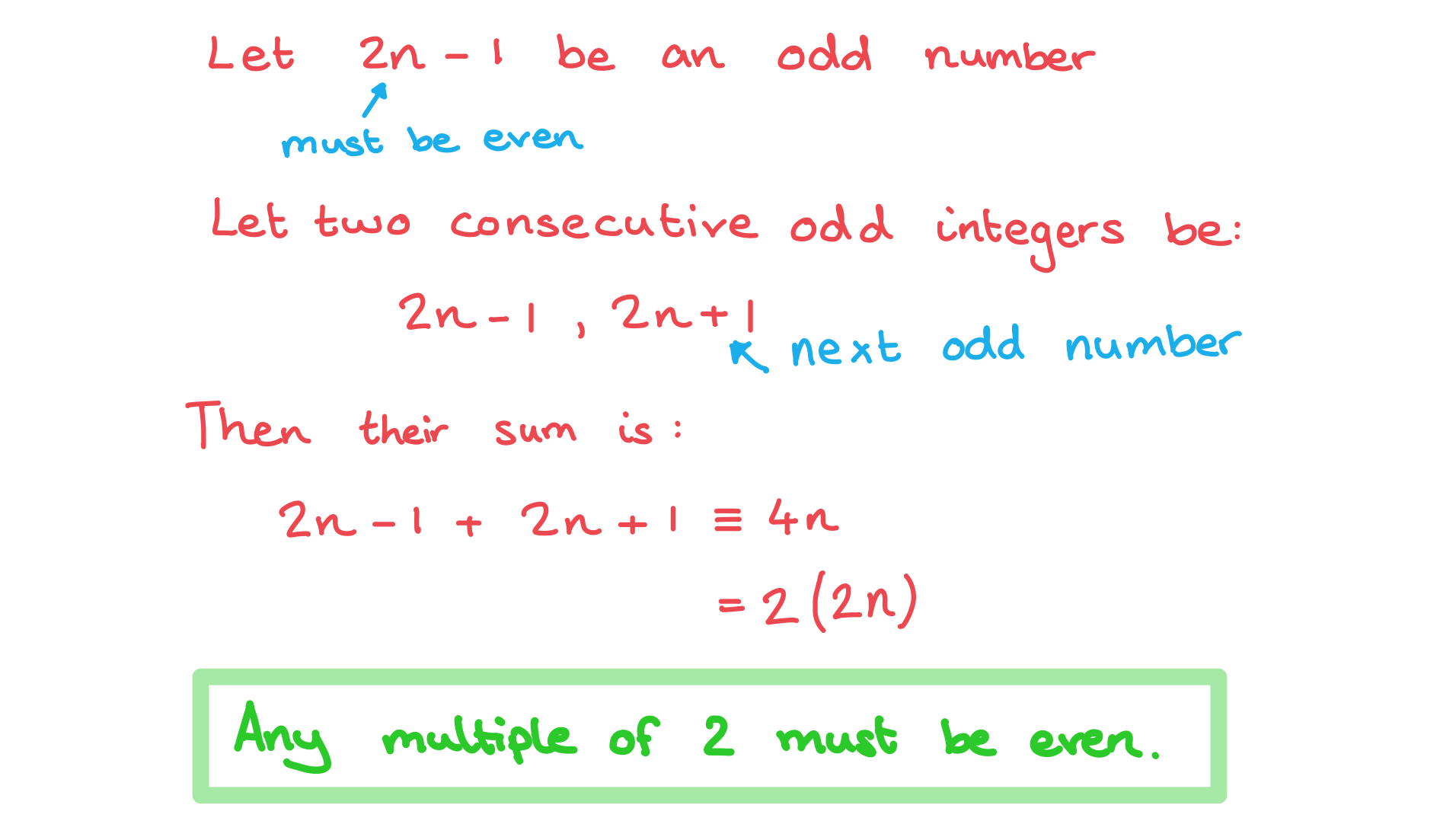Language of Proof
What is proof?
- Proof is a series of logical steps which show a result is true for all specified numbers
- ‘Seeing’ that a result works for a few numbers is not enough to show that it will work for all numbers
- Proof allows us to show (usually algebraically) that the result will work for all values
- You must be familiar with the notation and language of proof
- LHS and RHS are standard abbreviations for left-hand side and right-hand side
- Integers are used frequently in the language of proof
- The set of integers is denoted by
- The set of positive integers is denoted by
- The set of integers is denoted by
How do we prove a statement is true for all values?
- Most of the time you will need to use algebra to show that the left-hand side (LHS) is the same as the right-hand side (RHS)
- You must not move terms from one side to the other
- Start with one side (usually the LHS) and manipulate it to show that it is the same as the other
- A mathematical identity is a statement that is true for all values of x (or θ in trigonometry)
- The symbol
is used to identify an identity
- If you see this symbol then you can use proof methods to show it is true
- The symbol
- You can complete your proof by stating that RHS = LHS or writing QED
Exam Tip
- You will need to show each step of your proof clearly and set out your method in a logical manner in the exam
- Be careful not to skip steps
Worked Example
Prove that .

Proof by Deduction
What is proof by deduction?
- A mathematical and logical argument that shows that a result is true
How do we do proof by deduction?
- A proof by deduction question will often involve showing that a result is true for all integers, consecutive integers or even or odd numbers
- You can begin by letting an integer be n
- Use conventions for even (2n ) and odd (2n – 1) numbers
- You can begin by letting an integer be n
- You will need to be familiar with sets of numbers
– the set of natural numbers
– the set of integers
– the set of quotients (rational numbers)
– the set of real numbers

Exam Tip
- Try the result you are proving with a few different values
- Use a sequence of them (eg 1, 2, 3)
- Try different types of numbers (positive, negative, zero)
- This may help you see a pattern and spot what is going on
Worked Example
Prove that the sum of any two consecutive odd numbers is always even.

